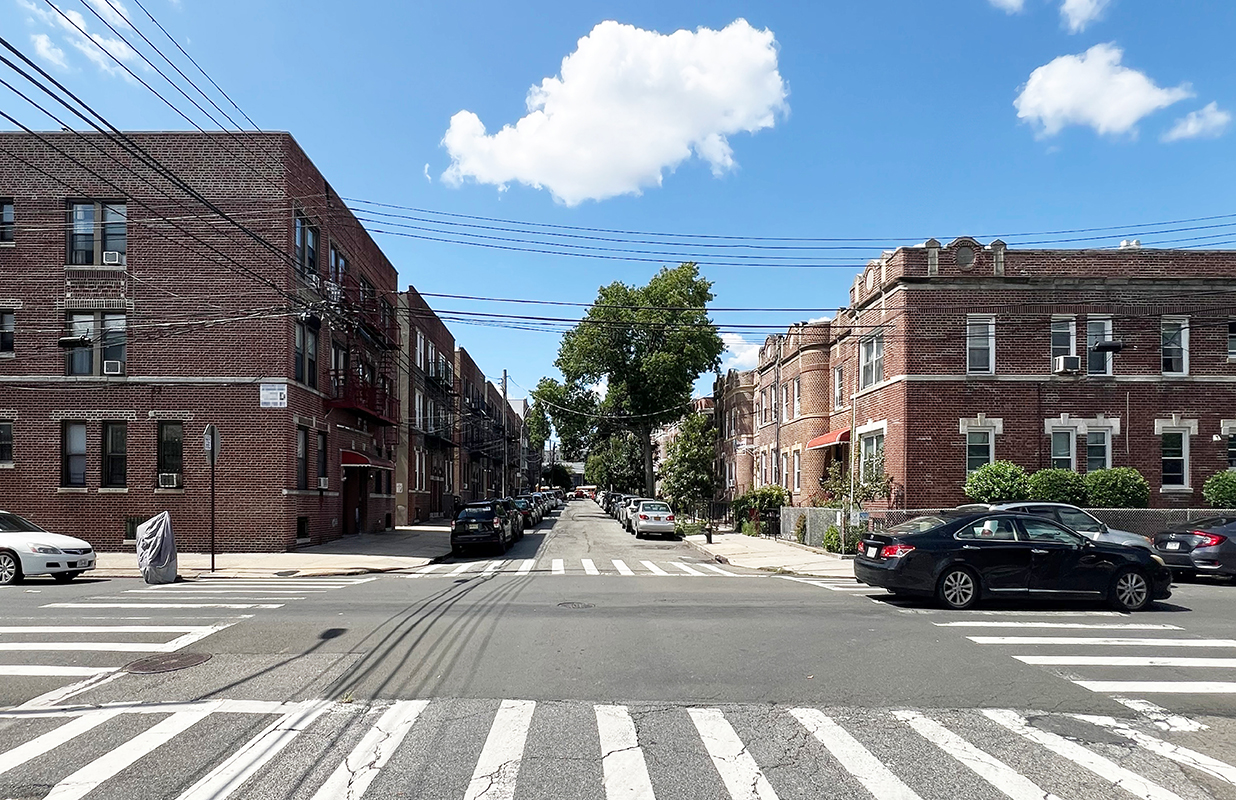

To address barriers and accelerate retrofits of residential buildings under 25,000 square feet, create a network of neighborhood retrofit One-Stop Shops.
By Jane Bartman, Tommaso Bitossi, Lisa Bolle, Jonathan Molloy, Rebekah Morris-Gonzalez, Crystal Ng, Keith Ryan, Elaine Wang, Jess Wunsch, Sheena Zhang
The Need
In the summer of 2023, New York City’s skies turned red with smoke from wildfires thousands of miles away. Months later, heavy rainfall inundated roadways, stranded residents in basement apartments, and brought much of the subway system to a halt. In January 2024, New York City reached a 700-day streak – its longest ever – without an inch of snowfall. This past summer, the planet recorded its hottest day in history, according to the European Union’s Copernicus Climate Change Service.(1) Extreme heat, the deadliest natural hazard in New York City, causes an estimated 350 premature deaths annually.(2) Record heat, increased flooding, and other climate hazards raise an urgent alarm for more coordinated action to mitigate climate change.
New York leaders have taken up this challenge by setting a net-zero by 2050 target and advancing regulations to accelerate decarbonization. Retrofitting New York City’s building stock, which accounts for approximately 70% of the city’s greenhouse gas emissions, is crucial to meeting this goal.(3) However, while the City’s marquee decarbonization law, Local Law 97, regulates emissions from buildings over 25,000 square feet, New York City has not yet taken the same level of action to tackle emissions from smaller buildings.
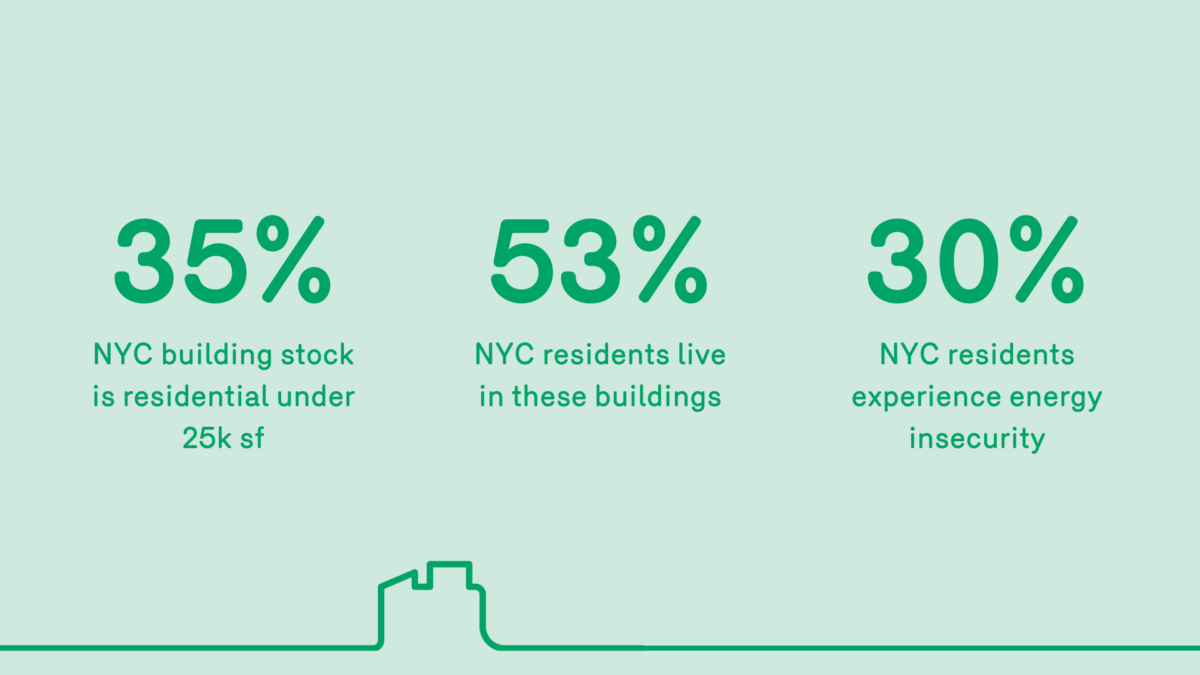
Existing residential buildings under 25,000 square feet are particularly challenging to decarbonize at scale. Barriers include financial constraints, building ownership structures, deferred maintenance, knowledge gaps among residents and contractors, and the disruptive nature of in-home retrofits. For the city to reach its climate targets, near-term action and support to retrofit these types of buildings are critical. Citywide, these smaller buildings represent 31% of the building stock and house an estimated 4.2 million residents (53% of the population).(4) The City’s 2050 net-zero goal will require reducing the energy use intensity (EUI) of these buildings by at least 50% and electrifying approximately 30,000 annually until 2050.(5)
The need for an unprecedented retrofit acceleration comes as New Yorkers grapple with historic levels of housing cost burden.(6) This burden falls hardest on vulnerable residents and communities, including many that have contended with decades of underinvestment and disinvestment and are on the frontlines of the health and safety impacts of climate change. New York City must proactively plan for an equity-focused and community-driven approach to its green transition to ensure that the benefits of decarbonization are accessible to all residents.
The Vision
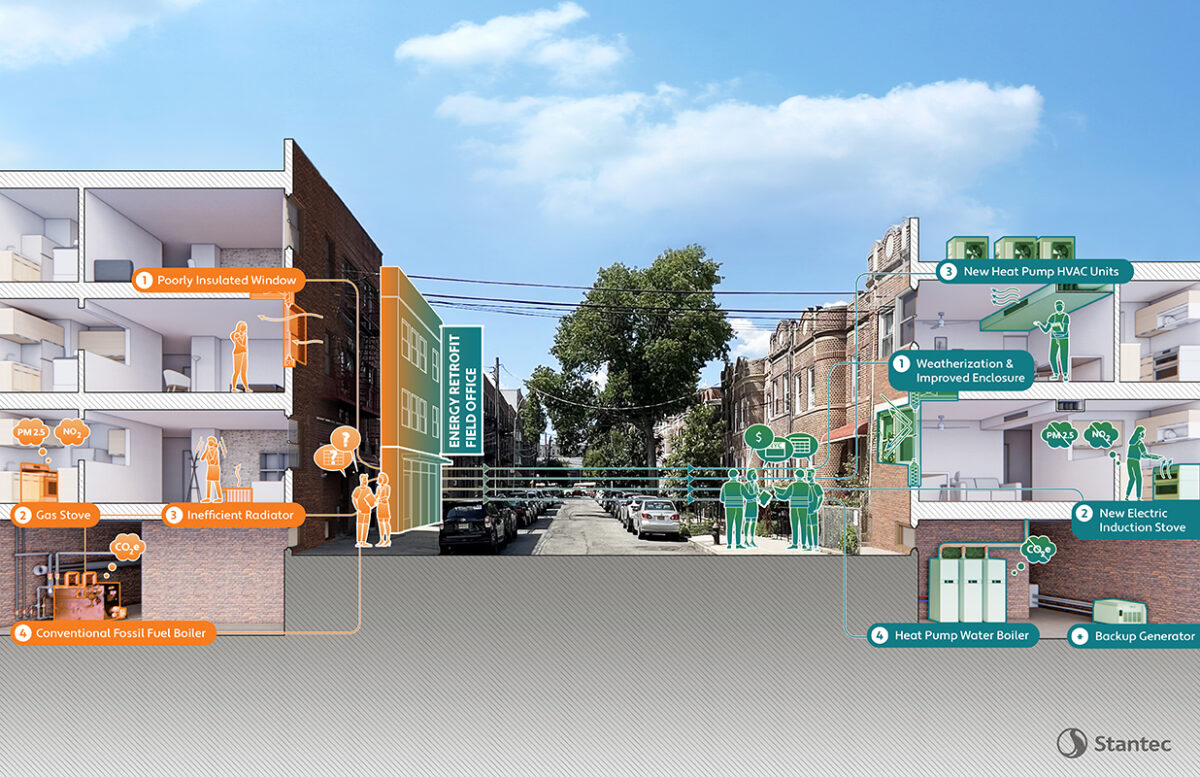
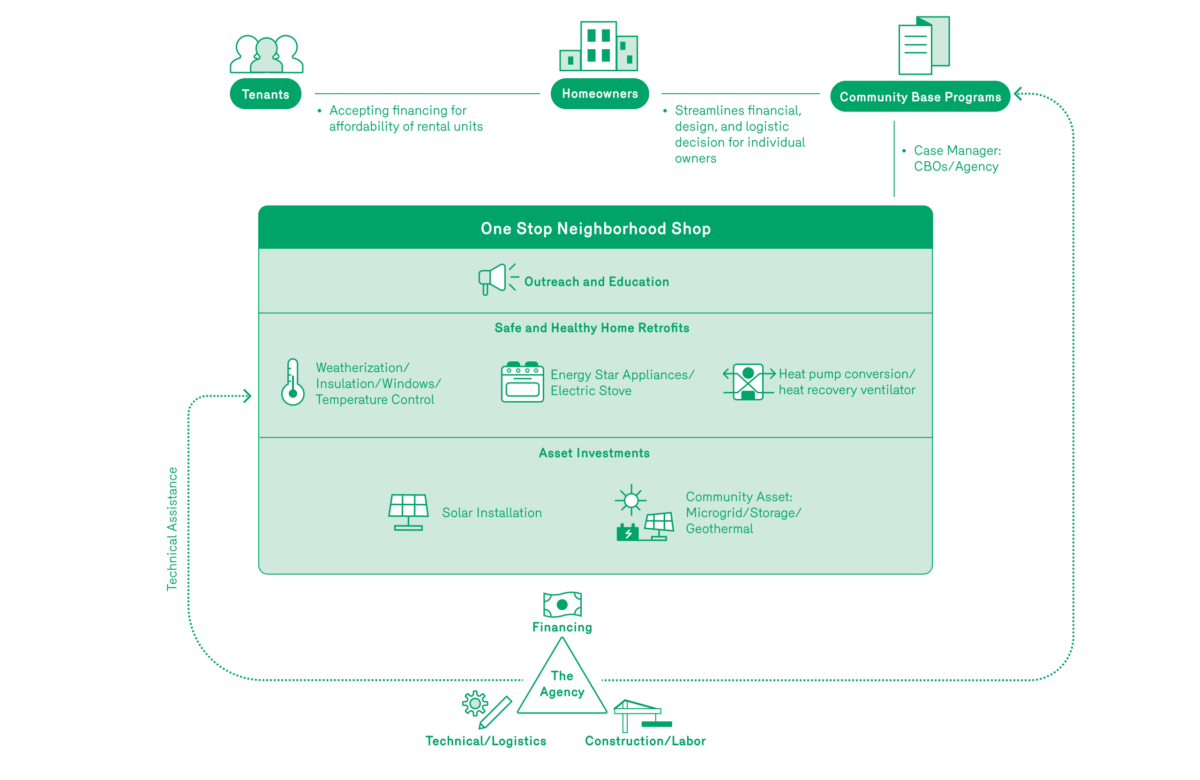
To accelerate the retrofitting of multifamily buildings under 25,000 square feet and overcome existing barriers, we propose the creation of an NYC Housing Retrofit Agency. This agency would expedite retrofits by coordinating city agency stakeholders, streamlining processes, and offering centralized case management for small building owners and residents.
The program aims to reduce costs and timelines while improving retrofit quality across New York City. By aligning city processes and paperwork needed for retrofits, securing incentives, and financing, it would enhance contractor and technical professional readiness, particularly for smaller buildings. It would also increase resident awareness, understanding, and engagement in retrofit and decarbonization efforts.
The new agency would focus on the following strategies and action areas to effectively implement building retrofits and streamline processes:
→
Map and streamline processes, regulatory requirements and incentives, similar to the NYC School Construction Authority.
- Utilize data-driven approaches to aggregate projects, reduce time lags, eliminate duplicative processes, and identify cost-saving opportunities.
- Develop capacity in relevant city agencies and external partners/contractors to accelerate project deployment.
- Coordinate with and advocate to state and federal governments and utilities to develop financial and technical supports, as well as to improve regulations and processes that accelerate building retrofits. These efforts should be continually informed by insights from neighborhood-level delivery in collaboration with community-based organization (CBO) partners.
- Structured as a quasi-city entity with independent bonding authority, similar to the NYC Housing Development Corporation, this agency could be empowered to finance retrofits for existing buildings at scale.
→
Fund a network of neighborhood retrofit One-Stop Shops that provide outreach and project management support.
- One-Stop Shops, managed by local CBOs and tailored to neighborhood needs, should be flexible and may be co-located with initiatives like MOCEJ’s (Mayor’s Office of Climate and Environmental Justice) Climate Strong Communities, existing local hubs such as SBS’s (Department of Small Business Services) Business Solutions Centers, or targeted based on retrofit readiness and need.
- Provide residents and property owners with comprehensive support from initial outreach to project completion. This includes education on retrofitting and decarbonization, guidance on funding, financing options, and incentives, assistance with applications, access to a network of approved contractors, and case management for project delivery.
- Develop a digital support hub that serves as an online access point to resources.
- Offer in-person and virtual “office hours” with architects, energy counselors, engineers, contractors, and health and environmental assessors (asbestos/lead).
→
Support market building for energy retrofits.
- Build a market for retrofits at scale by connecting and informing contractors of upcoming bidding opportunities.
- Offer support and upskilling to help minority, women-owned, and worker-owned contractors prepare for bids.
Act Now
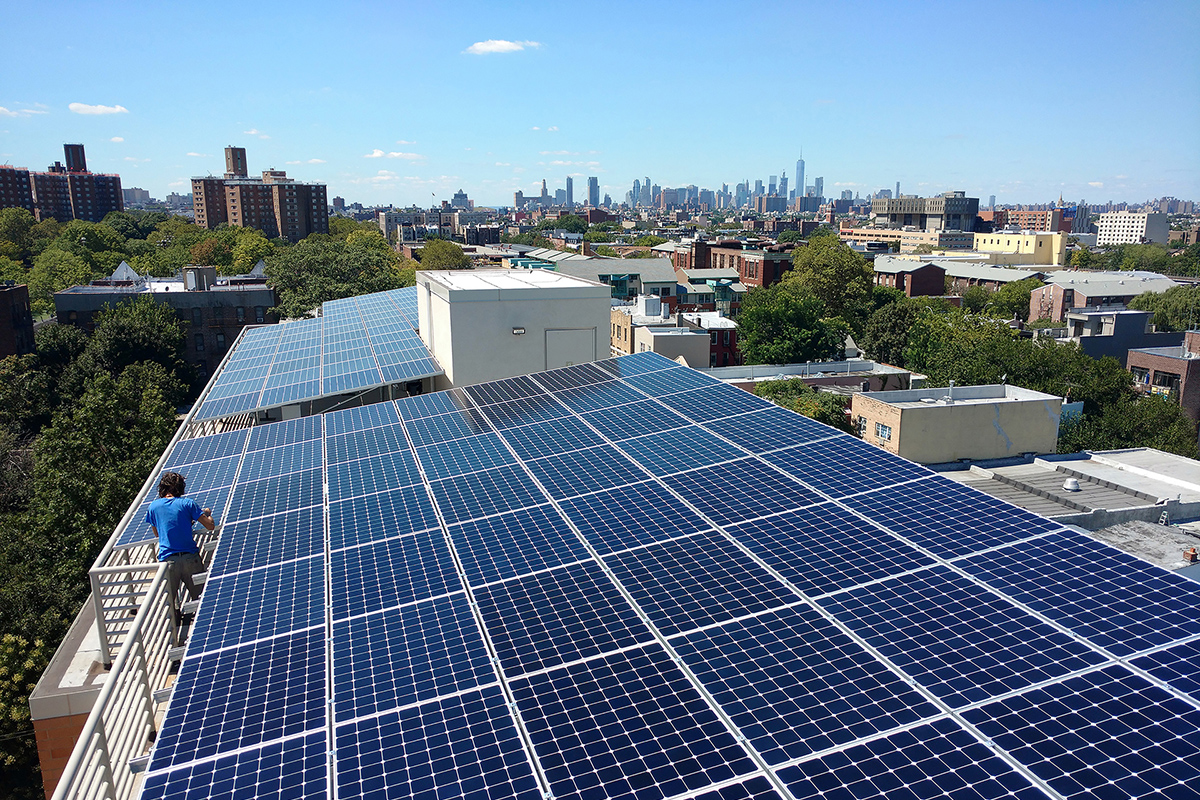
To test the tools for developing a retrofit agency, New York City could create a Neighborhood Retrofit Aggregation Pilot Program (NRAPP) within the next year. The pilot could be led by the Department of Housing Preservation and Development (HPD), MOCEJ, NYC Accelerator, the Department of Buildings (DOB), and any other relevant city agencies.
NRAPP could aim to accelerate the retrofitting of multifamily buildings under 25,000 square feet by addressing common barriers. By aggregating buildings, the pilot program can accelerate the process by achieving project scale.
To maintain the City’s core focus on equity, the pilot could target underserved, low-to-moderate-income neighborhoods. It could also incorporate renewable projects that would offer residents no-cost electricity and possibly provide payments for selling energy back to the energy grid, thus providing both health and financial benefits for residents.
NRAPP could provide insights to refine future strategies and improve project execution, enhance contractor and resident skills, and generate positive publicity to boost political support. It will also lead to a detailed plan for expanding the aggregation model.
To carry out the NRAPP pilot, the following steps should be taken:
1.
Neighborhood Selection: The pilot program focuses on 3-5 neighborhoods selected based on specific criteria, such as the presence of a local CBO partner, a high percentage of residents earning under 80% of the area median income (AMI), and buildings with outdated or end-of-life boilers or those using heating oil.
2.
Opt-in Model: Trusted CBOs, provided with proper compensation, lead extensive local outreach efforts to aggregate 10-20+ units in the target neighborhoods, encouraging participation through a community-centered approach.
3.
Project Management Support: Participants receive comprehensive support, including project management, education, and upskilling. The program connects them with contractors, and local contractors are trained to become agency-certified, ensuring quality and consistency.
4.
Aligned Timelines: The program aligns participant timelines to streamline the work of design teams and contractors, facilitating collective purchasing of materials and equipment, which reduces costs and expedites project completion.
5.
Renewable Energy Aggregation: The program explores bulk purchasing and community-scale renewable energy development, including battery storage, to lower costs and overcome technical barriers for individual property owners.
6.
Tenant Protections: The program ensures tenant affordability and protections in participating rental buildings by offering mechanisms like forgivable loans and safeguards against resale or renter displacement.
7.
Funding for Upgrades: The program provides funding or low-cost financing for essential health and safety upgrades, ensuring that necessary improvements are affordable and accessible.
Case Studies
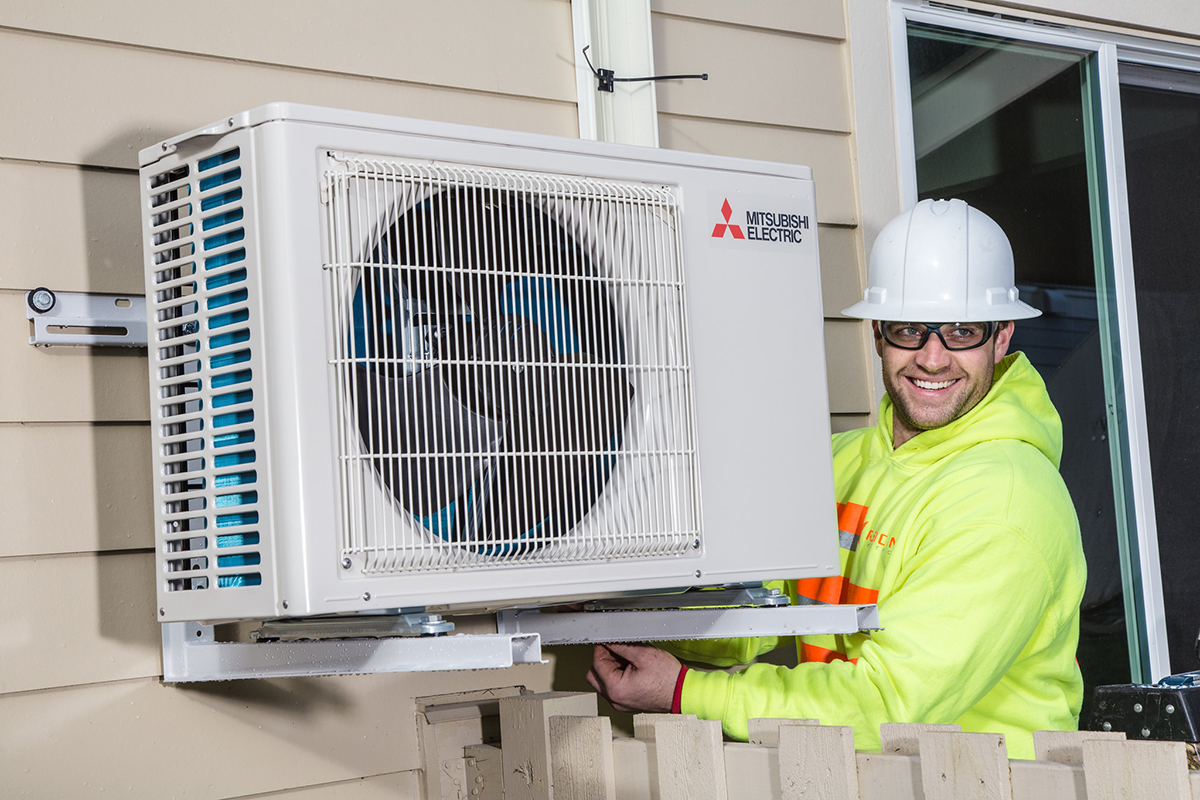
| PROJECT | OVERVIEW | IMPACT | RELEVANCE |
| Momentum™ Platform | Momentum™ is a technology platform by Cadence OneFive designed to enhance efficiency and electrification in multi-family housing, providing detailed cost and usage data. | In its second year, Momentum™ supports compliance with LL97 and Article 321, aiding Con Edison, NYS Family Homes, HPD, Related Companies, and LLM. | Momentum™ exemplifies a data-driven approach crucial for NYC’s decarbonization goals by streamlining retrofits and avoiding costly bespoke solutions. |
| Climate Friendly Homes Fund (CFHF) | CFHF, managed by The Community Preservation Corporation, provides financing for retrofitting 5-50 unit buildings in NYS with all-electric, high-performance systems. | With $250 million in funding, CFHF has retrofitted 10,000 units statewide, established a project pipeline, and provided forgivable loans for electrification. | CFHF serves as a model for retrofitting small multifamily buildings in NYC, offering insights for developing retrofit agencies and neighborhood One-Stop Shops. |
| Public Solar Program | The proposed Public Solar NYC program aims to install 600 MW of rooftop solar, creating up to 13,000 jobs and offering cost savings to energy-burdened communities. | Scheduled to launch by 2025, the program will leverage public financing for solar installation, targeting buildings with solar access challenges and integrating high-road labor standards. | Public Solar NYC provides a model for future solar initiatives, particularly for low-income and environmental justice communities, by offering no-cost installations and supporting clean energy goals. |
| Rockaway Avenue Building Retrofit | The Rockaway Avenue project, managed by HPD, involved retrofitting a three-story, 6-unit dwelling with insulation, air-sealing, and a new heating system, addressing health and safety concerns. | The retrofit improved resident health and safety, increased building resiliency, and reduced carbon emissions with new insulation, Energy Star appliances, and a gas boiler. | This case study highlights the challenges of small-scale retrofits and the importance of addressing health and safety issues, demonstrating the benefits of comprehensive projects managed by HPD. |
| Health Infrastructure NSW Australia | Health Infrastructure Australia oversees a large portfolio of healthcare projects, focusing on creating welcoming environments with a $7.7 billion budget. | The agency’s work has enhanced the functionality and aesthetics of health facilities, strengthening the healthcare ecosystem and setting new standards with a $10 billion project pipeline. | Health Infrastructure Australia provides valuable insights as a parallel for government-managed building improvements though focused on different outcomes. |

Jane Bartman
Manager, Sustainability, Bloomberg
Jane Bartman is a manager on the Sustainability team at Bloomberg Associates, a philanthropic consultancy that advises cities around the world and is part of Bloomberg Philanthropies. Jane works with city governments in the U.S. and internationally to advance priority sustainability and resiliency projects, with a focus on built environment decarbonization. Jane’s background spans the private, non-profit, and public sectors.

Tommaso Bitossi
Associate Partner, Transsolar
Tommaso Bitossi focuses on two aspects of climate responsive design: architecture and climate engineering based on his professional value of ‘sufficiency before efficiency.’ Tommaso deeply believes that a decision-making process based on a solid engineered and out-of-the-box thinking leads to resource conscious solutions and high quality built environments.

Lisa Bolle
Associate, Thornton Tomasetti
Lisa Bolle is an accomplished green building and wellness consultant, with nine years of experience bringing innovative and sustainable projects to light. Her expertise in new construction and existing building operations helps teams think through the many stages of a building’s life cycle to choose the best design interventions and operational strategies. Lisa also has extensive experience in corporate sustainability consulting/strategy consulting.

Jonathan Molloy
Associate, SO-IL
Jonathan Molloy is a practicing architect and educator based in Brooklyn, New York. His work focuses on cultural, residential, and adaptive reuse projects. He is an associate at SO – IL, where he is project architect for the Williams College Museum of Art project, as well as a multifamily residential project under construction in Brooklyn. He previously worked at Marvel Architects in New York and Moneo Brock Studio in Madrid.
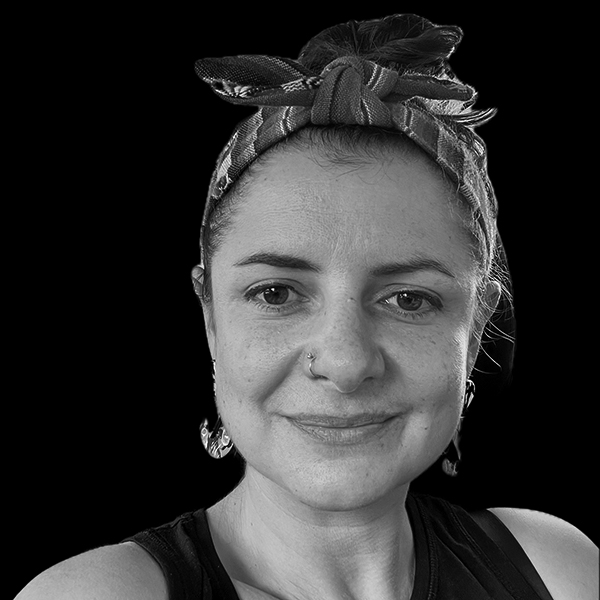
Rebekah Morris-Gonzalez
Senior Program Manager, Pratt Center for Community Development
Rebekah Morris-Gonzalez works at the intersection of housing, sustainability, and racial justice, with a focus on programs and policies that address energy efficiency, electrification, affordable housing, and climate mitigation and resiliency. As Senior Program Manager at Pratt Center for Community Development, she leads EnergyFit Affordable Small Homes, a decarbonization demonstration providing repairs, retrofits, and electrification measures for 75 2- and 3-unit buildings in Brooklyn.

Crystal Ng
Director of Sustainability, Curtis + Ginsberg
Passionate about the capacity of low-carbon design to build a more equitable society, Crystal Ng is Director of Sustainability at Curtis + Ginsberg Architects. She leads many of the firm’s Passive House and LEED projects and directs C+GA’s commitment the AIA 2030 Challenge. She was recognized as one of Crain’s 2023 Notable Leaders in Sustainability. Her work to advance high performance design contributed to C+GA’s 2021 Ivory Prize for Innovation in Affordable Housing.

Keith Ryan
Principal, Stantec
Keith Ryan is a Principal in Stantec’s Buildings practice with over a decade and a half of experience as a building services engineer. As an MEP Principal, he is recognized for his ability to design practical and economically savvy projects without compromising quality. Keith brings a keen understanding of all design disciplines, and the coordination required in various building types. He is driven to explore design possibilities with Architects while providing developers surety of outcome.
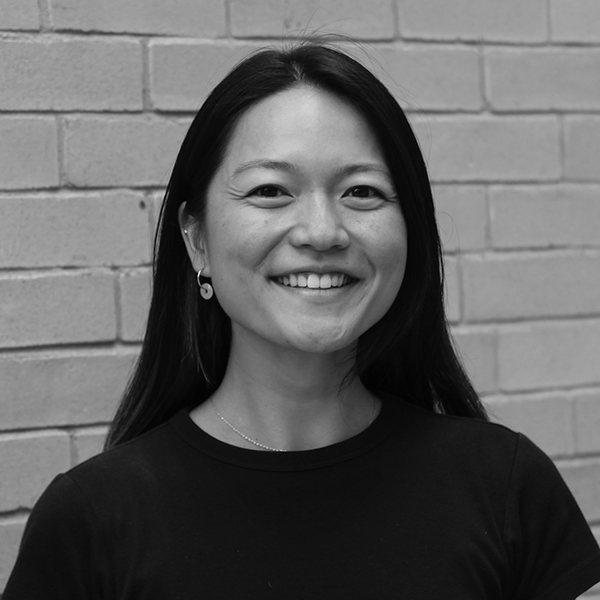
Elaine Wang
Co-Founder, Jane Energy
Elaine Wang is a data scientist and urban planner. Previously, she was a Product Manager at Sonder. She most recently graduated with a Masters in City Planning from MIT and now has co-founded Jane Energy, a climate-tech startup based in NYC that helps homeowners make their homes more climate-friendly.

Jess Wunsch
Director of City Engagement, NYU Furman Center Housing Solutions Lab
Jess Wunsch works with local policy leaders in small and midsize cities to develop, implement, and evaluate local housing policies. Trained as an urban planner and researcher, she is passionate about innovations in land use and climate policy, building relationships among peer cities across the U.S., and making cross-sectoral connections to advance both housing justice and climate resilience in NYC.

Sheena Zhang
Sustainability Specialist, Autodesk
Sheena Zhang is an AEC Sustainability Specialist at Autodesk, where she develops the internal sustainability strategy across Autodesk’s product ecosystem for the architecture, engineering, and construction industry. Previously, she was a sustainability consultant at Atelier Ten, where she managed projects including adaptive reuse, museum, healthcare, and masterplans with a range of sustainability goals like net-zero carbon, zero waste of resources, and net-zero water waste.
1 Copernicus Climate Change Service, New Record Daily Global Average Temperature Reached in July 2024, accessed August 1, 2024, https://climate.copernicus.eu/new-record-daily-global-average-temperature-reached-july-2024.
2 New York City Department of Health and Mental Hygiene, Extreme Heat and Health in New York City, accessed August 1, 2024, https://a816-dohbesp.nyc.gov/IndicatorPublic/data-features/heat-report/.
3 “Energy and Water Map,” New York City Mayor’s Office of Climate and Environmental Justice, accessed August 12, 2024, https://climate.cityofnewyork.us/initiatives/energy-and-water-map/.
4 New York City Department of City Planning, “MapPLUTO,” NYC Planning, accessed August 12, 2024, https://www.nyc.gov/site/planning/data-maps/open-data/dwn-pluto-mappluto.page.
5 Ibid.
6 Furman Center. State of the City 2022: Citywide Data. Accessed August 26, 2024. https://furmancenter.org/stateofthecity/view/citywide-data.